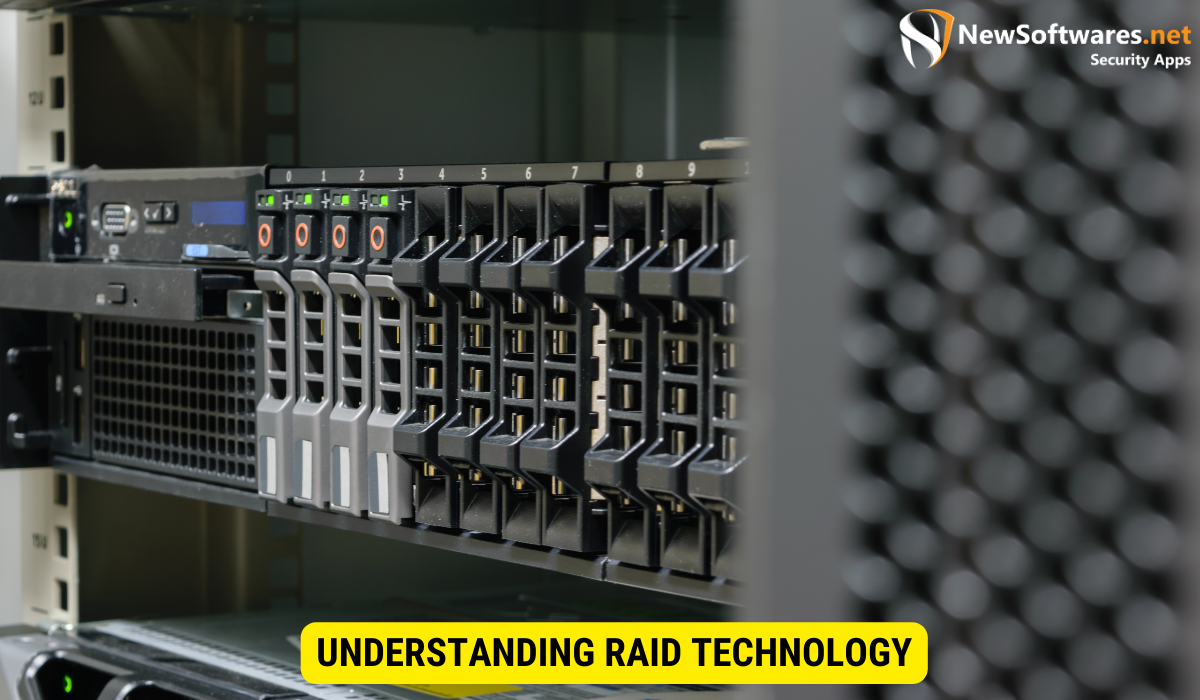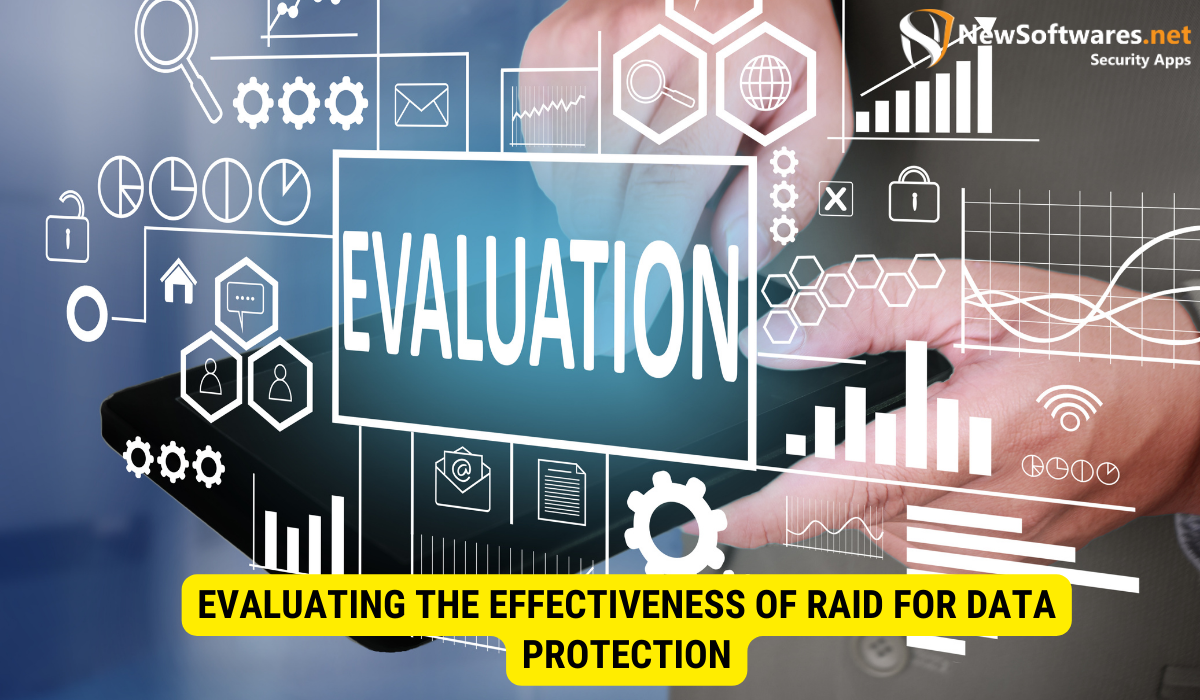RAID (Redundant Array of Independent Disks) technology is a powerful tool for safeguarding sensitive data. By combining multiple drives into a single logical unit, RAID enhances data protection, performance, and storage capacity. Understanding RAID levels, proper implementation, and ongoing management are essential steps in securing valuable information. RAID technology plays a crucial role in data security, ensuring data integrity and minimizing downtime in case of equipment failures. Regular monitoring, troubleshooting, and evaluation are key to maintaining optimal data protection.
In today’s digital age, data is a valuable asset that needs to be protected from various threats. From cyberattacks to hardware failures, organizations must take proactive measures to ensure the security and integrity of their sensitive information. One technology that has proven to be highly effective in safeguarding data is RAID (Redundant Array of Independent Disks). RAID technology combines multiple disk drives into a single logical unit, providing enhanced data protection, performance, and storage capacity. I will explore the importance of utilizing RAID technology for the protection of sensitive data, the different levels of RAID, and the steps involved in implementing and managing RAID systems.
Understanding RAID Technology

RAID technology, an acronym for Redundant Array of Independent Disks, is a storage technology that works by distributing data across multiple disk drives in a way that improves redundancy, fault-tolerance, and performance. By using redundancy techniques such as mirroring or parity, RAID ensures that data remains accessible and intact even if a disk fails. This technology has become increasingly popular in both personal and enterprise-level storage solutions due to its ability to provide data protection and improved performance.
The Basics of RAID
RAID operates by combining multiple physical drives into one logical unit. This logical unit can then be accessed by the operating system as a single drive, making it easier to manage and utilize the storage capacity efficiently. The data is distributed across the drives in different ways depending on the RAID level being used.
One of the primary benefits of RAID is its ability to provide fault-tolerance. In RAID 1, for example, also known as mirroring, data is duplicated across two or more drives. This means that if one drive fails, the data can still be accessed and retrieved from the remaining drives. Similarly, in RAID 5 and RAID 6, parity information is used to provide redundancy, allowing for data reconstruction in case of a drive failure.
Another advantage of RAID is its ability to improve performance. In RAID 0, data is striped across multiple drives, which allows for parallel read and write operations. This results in faster data transfer rates and improved overall system performance. However, it is important to note that RAID 0 does not provide any redundancy, so if one drive fails, all the data on the RAID array may be lost.
Different Levels of RAID
There are several levels of RAID, each offering a different combination of data protection and performance benefits. The most commonly used RAID levels include RAID 0, RAID 1, RAID 5, RAID 6, and RAID 10, among others.
RAID 0, as mentioned earlier, offers improved performance by striping data across multiple drives. However, it does not provide any redundancy, making it more suitable for applications where performance is prioritized over data protection. This level of RAID is often used in scenarios such as video editing, where large files need to be processed quickly.
RAID 1, on the other hand, focuses primarily on data redundancy. It mirrors data across multiple drives, ensuring that if one drive fails, the data can still be accessed from the remaining drives. This level of RAID is commonly used in applications where data availability and reliability are crucial, such as database servers or critical file storage systems.
RAID 5 and RAID 6 offer a balance between performance and data protection. In RAID 5, data and parity information are distributed across multiple drives, allowing for data reconstruction in case of a single drive failure. RAID 6, on the other hand, provides an additional level of redundancy by using double parity information, allowing for data reconstruction even if two drives fail simultaneously. These levels of RAID are often used in scenarios where both performance and data protection are important, such as file servers or virtualization environments.
RAID 10, also known as RAID 1+0, combines the benefits of RAID 1 and RAID 0. It mirrors data across multiple sets of striped drives, providing both redundancy and improved performance. This level of RAID is commonly used in high-performance applications, such as database systems or enterprise-level storage solutions.
It is crucial for organizations to carefully choose the appropriate RAID level based on their specific requirements and priorities. Factors such as data protection, performance, storage capacity, and cost should all be taken into consideration when implementing a RAID solution.
The Importance of Data Protection
Risks of Data Breach
Data breaches have become increasingly common, with hackers constantly finding new ways to exploit vulnerabilities in systems and networks. The consequences of a data breach can be severe, ranging from financial losses to reputational damage. Implementing robust data protection measures, such as RAID technology, significantly reduces the risk of unauthorized access and data theft.
The Role of RAID in Data Security
RAID plays a vital role in ensuring data security by protecting against data loss due to equipment failures. By utilizing techniques like disk mirroring and parity, RAID provides a safety net that prevents the loss of critical information. In the event of a disk failure, RAID allows for quick recovery and minimal downtime, ensuring business continuity.
Implementing RAID Technology for Data Protection
Choosing the Right RAID Level
One of the first steps in implementing RAID technology is selecting the appropriate RAID level for the organization’s needs. Factors such as desired performance, level of redundancy required, and available budget should be considered when making this decision. It is crucial to understand the strengths and weaknesses of each RAID level to make an informed choice.
Steps in Setting Up RAID
Setting up a RAID system involves several steps, including hardware selection, configuring the RAID controller, and initializing the drives. Organizations should carefully follow the manufacturer’s instructions and best practices to ensure a smooth and successful implementation. Regular backups should also be performed to safeguard against data loss.
Maintenance and Management of RAID Systems
Regular Monitoring and Maintenance
Like any other technology, RAID systems require regular monitoring and maintenance to ensure optimal performance and data protection. This includes regularly checking for disk errors, updating firmware and drivers, and monitoring system logs for any anomalies. Proactive maintenance significantly reduces the risk of data loss and ensures the long-term viability of the RAID system.
Troubleshooting Common RAID Issues
Despite its robustness, RAID systems may encounter issues from time to time. Common problems include disk failures, controller malfunctions, and degraded performance. Organizations should have processes and procedures in place to quickly identify and resolve these issues to minimize downtime and maintain data integrity.
Evaluating the Effectiveness of RAID for Data Protection

Key Performance Indicators
When evaluating the effectiveness of RAID technology for data protection, organizations should monitor key performance indicators such as read/write speeds, disk utilization, and data resiliency. Analyzing these metrics allows organizations to identify any bottlenecks or areas for improvement in their RAID setup.
Improving RAID Setup for Optimal Data Protection
Continuous improvement is essential to ensure that RAID systems provide optimal data protection. This may involve periodically reviewing the RAID setup, upgrading to newer RAID levels or technologies, or integrating additional data protection measures such as backups and encryption. By staying proactive and adaptable, organizations can stay ahead of potential threats and keep their sensitive data secure.
Key Takeaways
- RAID technology combines multiple disk drives into a single logical unit, providing enhanced data protection, performance, and storage capacity.
- Choosing the appropriate RAID level is crucial to meet specific organizational requirements.
- RAID plays a vital role in data security by protecting against data loss due to equipment failures.
- Maintaining and monitoring RAID systems is vital to ensure optimal performance and data protection.
- Continuous evaluation and improvement are necessary to enhance the effectiveness of RAID systems for data protection.
FAQs
What is RAID technology?
RAID stands for Redundant Array of Independent Disks. It is a technology that combines multiple disk drives into a single logical unit to provide enhanced data protection and performance.
What are the different levels of RAID?
There are several levels of RAID, including RAID 0, RAID 1, RAID 5, RAID 6, RAID 10, and more. Each level offers a different combination of data protection and performance benefits.
Why is data protection important?
Data breaches can have severe consequences, including financial losses and reputational damage. Protecting sensitive data is crucial to maintain trust and compliance with regulations.
How can RAID technology help in data security?
RAID technology protects against data loss due to equipment failures. By utilizing redundancy techniques, such as mirroring and parity, RAID ensures data availability and quick recovery.
What are key performance indicators to evaluate RAID effectiveness?
Key performance indicators for RAID effectiveness include read/write speeds, disk utilization, and data resiliency.
Conclusion
In an era where sensitive data is constantly under threat, organizations must utilize robust technologies to protect their valuable information. RAID technology provides a reliable and efficient solution for data protection, combining redundancy, performance, and capacities of multiple disk drives. By understanding the different levels of RAID, implementing the appropriate RAID level, and regularly maintaining and monitoring the RAID system, organizations can significantly enhance their data protection capabilities. Continual evaluation and improvement ensure that RAID technology remains an effective safeguard against data breaches and contributes to overall data security.
